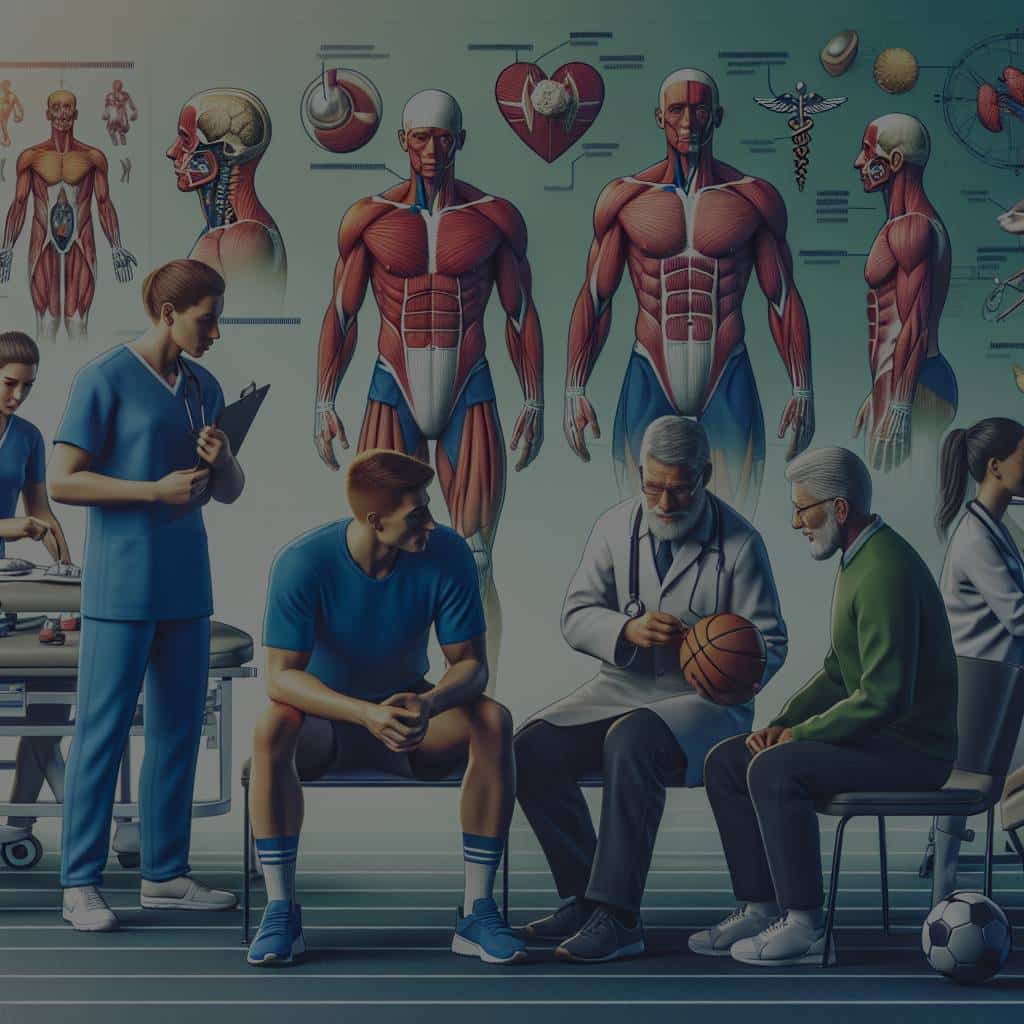What’s the Role of Sports Medicine in Managing Chronic Injuries in Veteran Athletes?

Sports and injuries often go hand in hand. Even the most prepared athletes can fall prey to unexpected injuries that can hamper their performance or even career. Sports medicine steps into the picture as a specialized branch of health care that focuses on the prevention, diagnosis, treatment, and management of injuries caused by physical activity, especially those experienced by veteran athletes.
Understanding Sports Medicine
Sports medicine is an essential field that ensures the well-being of athletes. This branch of medicine concentrates on managing and treating injuries sustained during sports or physical activities. It plays a critical role in helping athletes recover from their injuries and return to their optimal performance. The scope of sports medicine extends beyond just treatment – it includes injury prevention, performance optimization, wellness strategies, and even career longevity for veteran athletes.
A lire en complément : How to Design an Eco-Friendly Running Shoe That Doesn’t Compromise on Performance?
Health professionals in this field, often known as Athletic Therapists (ATs), work with patients, particularly athletes who have experienced injuries. They use a combination of various therapies, such as physical therapy, exercise, and medication to help the patients recover. These professionals are usually employed by sports teams, universities, and health care institutions.
Managing Chronic Injuries
Chronic injuries are persistent and can last for several months or even years if not appropriately managed. They are particularly prevalent in veteran athletes, who have exposed their bodies to years of strenuous physical activities. These athletes often experience chronic injuries like arthritis, tendonitis, and stress fractures.
Avez-vous vu cela : What Are the Ethical Implications of Genetic Testing in Predicting Sports Talent?
Sports medicine plays a vital role in managing these chronic injuries. ATs evaluate the patient’s health status and diagnose the type of injury. They then develop a customized treatment plan that may include exercise regimes, physical therapies, and medication. The primary aim of this treatment is not just to alleviate the pain but also to restore the athlete’s physical capabilities.
Prevention and Risk Management
Prevention is always better than cure. This principle holds for sports-related injuries too. Sports medicine emphasizes the prevention of injuries and risk management. ATs often work closely with athletes, guiding them on appropriate training and exercise regimes, and advising them on how to avoid potential injuries.
ATs also conduct risk management sessions for universities and sports teams, educating them about the potential injuries associated with specific sports, and how to mitigate these risks. They also provide recommendations on the use of safety equipment and correct techniques to reduce the risk of injuries.
Athletic Training and Rehabilitation
Rehabilitation is a vital aspect of sports medicine. It involves using specialized techniques and exercises to restore the athlete’s physical strength and mobility. ATs use a combination of strength training, flexibility exercises, and other therapeutic approaches to help athletes regain their health and performance capabilities.
Athletic training also includes educating athletes about their bodies, how they function, and how to maintain their physical health. This education can help athletes make informed decisions about their health and training, reducing the likelihood of injuries in the future.
The Future of Sports Medicine
With the continuous advancement in medical technology, the future of sports medicine looks promising. From using sophisticated devices for diagnosis and treatment to incorporating artificial intelligence for personalized treatment plans, the field is set to revolutionize how athletes’ injuries are managed.
Moreover, with more universities offering programs in sports medicine and training, the future will see a higher number of qualified and skilled ATs. This growth will contribute to better injury management, ensuring athletes can continue to perform at their best for longer.
In conclusion, sports medicine plays a critical role in managing chronic injuries in veteran athletes. It’s not just about treating injuries; it’s about delivering holistic care that encompasses prevention, risk management, and rehabilitation, thus ensuring the overall well-being of the athlete.
The Role of Manual Therapy in Sports Medicine
Manual therapy is a significant component of sports medicine and is often used by athletic trainers to help manage chronic injuries. It involves the use of hands-on techniques to mobilize muscles, joints, nerves, connective tissues, and soft tissue structures. These procedures are typically used to reduce pain and inflammation, improve range of motion, and promote overall healing and recovery.
A systematic review published on PubMed Google reveals that manual therapy is an effective tool in managing various sports injuries. For instance, it’s used in the treatment of lower extremity injuries, which are common among veteran athletes. These may include sprains, strains, fractures, or long-term injuries like arthritis and tendonitis.
Manual therapy techniques are also used for pain management. According to a study indexed on Google Scholar, athletes who received manual therapy reported significant reductions in pain and improvements in physical function. The study further highlighted that manual therapy could be a valuable component of a comprehensive treatment plan for chronic injuries.
In the United States, the use of manual therapy by athletic trainers has been gaining popularity, given its proven effectiveness. The therapy is, however, not a one-size-fits-all solution. It should be customized based on the athlete’s specific injury, their overall health, and their long-term physical activity goals.
Sports Medicine and Injury Prevention
Injury prevention is a cornerstone in sports medicine, aiming to reduce the risk factors associated with various sports injuries. It involves understanding the nature of injuries, their causes, and how they can be prevented. This is where sports med plays a crucial role, providing the necessary knowledge and strategies to minimize the risk of injuries.
Educational programs on injury prevention, often facilitated by athletic trainers, are a common sight in sports teams and universities across the United States. These programs equip athletes with the knowledge and skills needed to prevent injuries. They cover various topics, including proper warm-up and cool-down techniques, correct use of safety equipment, and appropriate training regimes.
A full text article on PubMed Google shows that implementing injury prevention strategies can significantly reduce the incidence of sports injuries. These strategies can be particularly beneficial for veteran athletes, who often have a higher risk of chronic injuries due to their long-term exposure to strenuous physical activities.
While it’s important to remember that not all injuries can be prevented, sports medicine’s role in injury prevention cannot be overstated. By educating athletes and promoting safe practices, sports medicine contributes significantly to the overall well-being and longevity of athletes’ careers.
Conclusion
In summation, sports medicine plays a pivotal role in managing chronic injuries among veteran athletes. It uses a diverse range of techniques and strategies, from manual therapy for pain management to injury prevention programs. As this field continues to evolve and leverage technological advancements, it promises a brighter future for athletes, helping them maintain their performance levels and extend their careers. Sports medicine’s holistic approach underscores the importance of not just treating injuries but also preventing them, underlining its indispensability in the realm of athletics.
